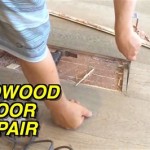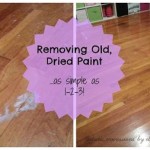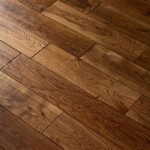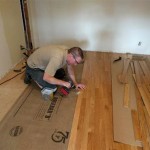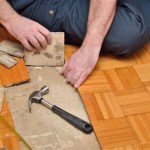Will Nail Polish Remover Damage Vinyl Flooring In Your House?
Vinyl flooring is a popular choice for many homeowners due to its durability, affordability, and ease of maintenance. However, accidental spills can happen, and some common household cleaners can pose a threat to its longevity. One such concern is nail polish remover, a powerful solvent known to dissolve certain materials. So, will nail polish remover damage your vinyl flooring? The answer is not straightforward and depends largely on the type of vinyl flooring and the specific nail polish remover used.
Nail polish remover is typically composed of acetone or ethyl acetate, both strong solvents that can potentially damage certain surfaces. While some vinyl flooring boasts high resistance to chemicals and solvents, others may be more susceptible to damage. The type of vinyl, the concentration of the solvent in the nail polish remover, and the duration of contact all play crucial roles in determining the potential for damage.
Understanding the Composition of Vinyl Flooring
Vinyl flooring is composed of polyvinyl chloride (PVC), a durable and versatile synthetic material. PVC is a thermoplastic, meaning it softens and can be molded when heated. This process allows manufacturers to create a variety of designs and textures for vinyl flooring. However, the presence of plasticizers in PVC, which are added to enhance flexibility and durability, can make the material vulnerable to certain solvents, including those found in nail polish remover.
The specific composition of vinyl flooring can vary depending on the manufacturer and the intended use. Some vinyl flooring is engineered for high-traffic areas and may be more resistant to chemicals and solvents. Others, designed for residential use, may have a thinner layer of PVC and less robust plasticizers, making them more susceptible to damage.
Factors Influencing Damage Potential
The damage potential of nail polish remover on vinyl flooring depends on a combination of factors:
Type of Nail Polish Remover
Acetone-based nail polish removers are stronger solvents than those based on ethyl acetate. Acetone can potentially cause more damage to vinyl flooring, particularly if it is not fully resistant to solvents. Ethyl acetate, while still a solvent, is generally considered less aggressive and may be safer for use on certain types of vinyl flooring. However, it is always advisable to check the manufacturer's recommendations for your specific flooring type and avoid using any type of nail polish remover without testing it on an inconspicuous area first.
Concentration of Solvents
The concentration of solvents in the nail polish remover can influence its potential to damage vinyl flooring. Higher concentrations of acetone or ethyl acetate will have a stronger dissolving effect and may cause more damage. It is essential to choose a nail polish remover with a lower concentration of solvents if there is any concern about damage to the flooring.
Duration of Contact
The length of time that the nail polish remover remains in contact with the vinyl flooring plays a significant role in the potential for damage. A brief spill can often be cleaned up without causing any noticeable harm, while prolonged exposure can lead to discoloration, warping, or even softening of the flooring material. It is crucial to clean up any spills immediately and avoid letting nail polish remover sit on the vinyl flooring for extended periods.
Testing Before Application
Before using any type of nail polish remover on your vinyl flooring, it is prudent to conduct a test in an inconspicuous area. This will help to determine the potential for damage and ensure that the cleaner does not cause any undesirable effects. If the tested area shows no signs of discoloration, softening, or other damage after a few hours, it is likely safe to use the nail polish remover on the rest of the flooring.
Alternatives to Nail Polish Remover
If you are concerned about the potential for damage to your vinyl flooring, consider using alternative cleaners. Some effective solutions for removing nail polish stains from surfaces include:
- Isopropyl alcohol: Isopropyl alcohol is a less aggressive solvent than acetone and may be a safer option for cleaning vinyl flooring. It can effectively remove nail polish stains without causing damage.
- Soap and water: For minor stains, a mild soap and water solution often suffices. Simply dampen a cloth with the soapy water and gently rub the stain until it disappears.
- Nail polish remover designed for delicate surfaces: Some nail polish removers are specifically formulated for use on delicate surfaces and may be less likely to cause damage to vinyl flooring. However, it is still essential to test these products on an inconspicuous area before using them on the entire flooring.
Conclusion
The potential for damage to vinyl flooring from nail polish remover is not absolute. While acetone-based nail polish remover can pose a greater risk, the type of vinyl flooring and the duration of contact are crucial factors to consider. By understanding the composition of your flooring, testing the nail polish remover on an inconspicuous area, and employing appropriate cleaning techniques, you can minimize the risk of damaging your vinyl floors.
Remember to always refer to the manufacturer's recommendations for your specific flooring type and choose cleaners carefully. It is always best to err on the side of caution and avoid using any harsh chemicals or solvents that could potentially damage your valuable flooring.

What Can Ruin Vinyl Flooring

How To Get Paint Off Vinyl Floor Completely 3 Easy Methods Home Briefings

How To Clean Vinyl Flooring Drag Marks Stains Scuff Cleaning Guide King Of Floors

How To Get Nail Polish Off Hardwood Floors Patriot Maids

How To Get Paint Off Vinyl Floor In 8 Easy Ways

How To Remove Nail Polish From Waterproo Bunnings Work Community

Help Removing White Spot Off Vinyl Floor Hometalk

How To Get Nail Polish Off Hardwood Floors Patriot Maids

How To Get Nail Polish Off Hardwood Floors Patriot Maids

How To Clean Vinyl Floors Jim S Cleaning
See Also
